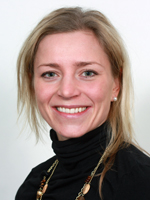Education and Research Experience
Postdoc. Stanford University School of Medicine, USA, TA Rando lab (2016-2018)
Project 1: Transcriptional profiling of quiescent muscle stem cells in vivo. Many stem cell populations, including muscle stem cells (MuSCs), exist in a quiescent state in vivo, exiting quiescence and entering the cell cycle in response to specific stimuli. However, most of the analyses of quiescent stem cells have come from assays ex vivo. We have examined the transcriptome of MuSCs in vivo utilizing muscle stem cell-specific labelling of RNA with 4-thiouracil. We show that the ex vivo transcriptome remains largely reflective of the in vivo transcriptome. Together, these data provide a novel view of the molecular regulation of the quiescent state at the transcriptional level, demonstrate the utility of these tools for probing transcriptional dynamics.
Project 2: Aging leads to loss of muscle stem cell function and we have found that exercise (running) benefits aged muscle stem cell function. Not published.
2014. Received The Research Council of Norway Personal Postdoc Grant (3-year FRIPRO postdoc grant with a <9% score)
PhD. Department of Molecular Biosciences, University of Oslo, K Gundersen lab (2008-2014)
Project: Previous strength training facilitates subsequent re-acquisition of muscle mass after periods of inactivity. For long this “memory” was attributed to neural adaption only. This work was the first to describe a muscle intrinsic memory mechanism related to the elevated number of myonuclei after strength training.
MSc. Norwegian School of Sport Sciences (2005-2007)
BSc. Norwegian School of Sport Sciences (2002-2005)
Course coordinator and lecturer, University of Oslo (2014-2015)
Visiting researcher National Institute of Health, USA, A Buonanno lab (2010)
